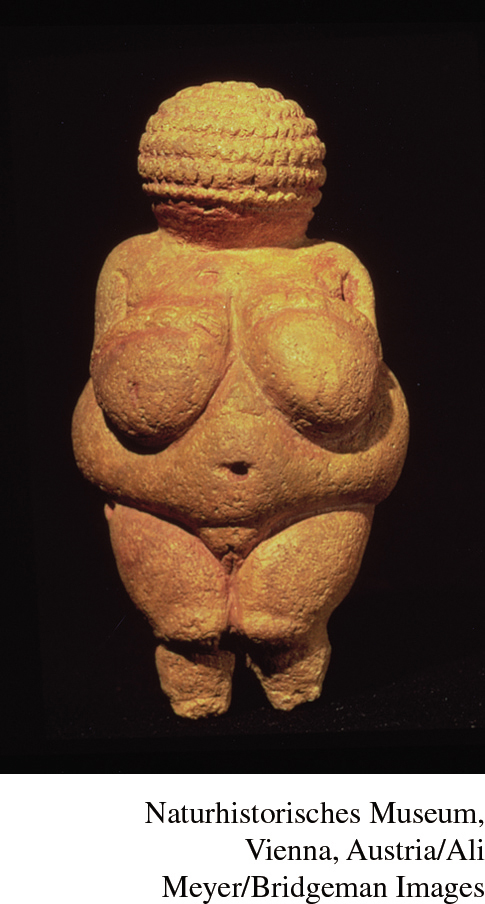The Realm of the Spirit

The religious or spiritual dimension of Paleolithic culture has been hard to pin down, because bones and stones tell us little about what people thought, art is subject to many interpretations, and the experience of contemporary gathering and hunting peoples may not reflect the distant past. Clear evidence exists, however, for a rich interior life. The presence of rock art deep inside caves and far from living spaces suggests a “ceremonial space” separate from ordinary life. The extended rituals of contemporary Australian Aboriginals, which sometimes last for weeks, confirm this impression, as do numerous and elaborate burial sites found throughout the world. No full-
Precisely how Paleolithic people understood the nonmaterial world is hard to reconstruct, and speculation abounds. Linguistic evidence from ancient Africa suggests a variety of understandings: some Paleolithic societies were apparently monotheistic; others saw several levels of supernatural beings, including a creator deity, various territorial spirits, and the spirits of dead ancestors; still others believed in an impersonal force suffused throughout the natural order that could be accessed by shamans during a trance dance.9 The prevalence of Venus figurines and other symbols all across Europe has convinced some, but not all, scholars that Paleolithic religious thought had a strongly feminine dimension, embodied in a Great Goddess and concerned with the regeneration and renewal of life.10 Many gathering and hunting peoples likely developed a cyclical view of time derived from recurring natural cycles: sunrise and sunset; changing seasons; the phases of the moon; patterns of female fertility—
SNAPSHOT: Paleolithic Era in Perspective
| Paleolithic Era (from 10,000 to 250,000 years ago) | Agricultural Era (from 200 to 10,000 years ago) | Modern Industrial Era (since 1800) | |
| Duration of each era, as a percentage of 250,000 years11 | 96% | 4% | 0.08% |
| Percentage of people who lived, out of 80 billion total | 12% | 68% | 20% |
| Percentage of years lived in each era (reflects changing life expectancies) | 9% | 62% | 29% |